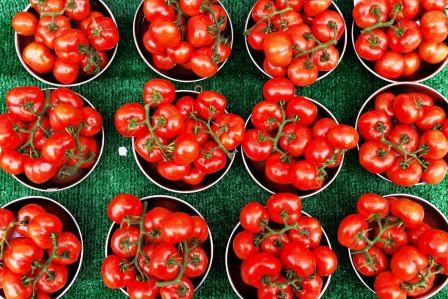The FDA tomato recall salmonella issue has escalated, sending shockwaves through three southern states. Last week, the Food and Drug Administration raised its recall of tomatoes distributed in Georgia, North Carolina, and South Carolina to a Class I warning, the agency’s most severe alert. This means the affected tomatoes, potentially contaminated with salmonella, could cause serious illness or even death. Consumers are scrambling to check their kitchens, and health officials are urging immediate action to prevent exposure. Here’s what you need to know about this critical situation, including how to stay safe and what steps to take if you’ve purchased these tomatoes.
What Triggered the FDA Tomato Recall Salmonella Alert?
The recall began in early May when Williams Farms Repack LLC, based in South Carolina, voluntarily pulled several sizes of tomatoes due to possible salmonella contamination. These tomatoes, sold under the H&C Farms Label, hit shelves between April 23 and April 28. Initially, the recall seemed precautionary, but the FDA’s recent upgrade to Class I status signals a far greater risk. Salmonella can survive in wet or frozen environments, meaning even tomatoes tucked away in freezers could still pose a threat. The affected products range from small three-packs to 25-pound boxes, making it critical for consumers to check their purchases carefully.
Salmonella infections are no small matter. This bacteria can cause symptoms like diarrhea, fever, nausea, and abdominal cramps, often appearing within hours to days of consumption. For vulnerable groups—children under five, adults over 65, and those with weakened immune systems—the consequences can be life-threatening. The Centers for Disease Control and Prevention estimates salmonella causes about 420 deaths annually in the U.S., underscoring the urgency of this recall.
How to Identify and Handle Affected Tomatoes
If you live in Georgia, North Carolina, or South Carolina, you need to act fast. The recalled tomatoes, distributed by Williams Farms Repack LLC, carry the H&C Farms Label. Check any tomatoes in your home, especially those bought in late April. If you’re unsure of their origin, don’t take chances—toss them out or return them to the store for a refund. The FDA notes that fresh tomatoes from the affected batch are unlikely to still be in stores, but frozen or stored tomatoes could still harbor the bacteria.
Here’s a quick guide to stay safe:
- Check Labels: Look for the H&C Farms Label on tomato packaging.
- Dispose Safely: Throw out suspect tomatoes in a sealed bag to avoid contamination.
- Clean Surfaces: Wash any containers or surfaces that may have touched the tomatoes.
- Monitor Symptoms: Seek medical help if you experience fever, diarrhea, or severe stomach issues after eating tomatoes.
Health officials stress that even washing contaminated tomatoes may not eliminate the risk, as salmonella can persist in tiny crevices or penetrate the fruit’s surface. If you’ve consumed these tomatoes and feel unwell, contact a healthcare provider immediately and mention possible salmonella exposure.
Why the FDA Tomato Recall Salmonella Risk Matters
This recall isn’t just about a few bad tomatoes—it’s a wake-up call about food safety. Salmonella outbreaks can spread quickly, especially when contaminated produce reaches multiple states. The FDA’s Class I designation means the agency believes there’s a “reasonable probability” that eating these tomatoes could lead to severe health issues or death. While no illnesses or deaths have been reported as of June 2, 2025, the potential for harm remains high, particularly for those who may have frozen the affected tomatoes for later use.
The recall also highlights the challenges of tracing contamination in the food supply chain. The source of the salmonella in these tomatoes remains unknown, complicating efforts to prevent future outbreaks. Distributors like Williams Farms Repack LLC are working with the FDA to notify wholesalers and retailers, but consumers must stay vigilant. This situation reminds us how quickly a routine grocery purchase can turn dangerous if safety protocols falter.
Steps to Protect Your Family
Beyond discarding affected tomatoes, take proactive steps to safeguard your household. Check your fridge and freezer for any tomatoes bought in late April, especially if you’re in the affected states. If you’ve used these tomatoes in meals, monitor family members for symptoms like nausea, vomiting, or fever. Quick action can make all the difference in preventing severe illness.
For those who shop at farmers’ markets or local stores, ask about the origin of your produce. While the recall targets specific distributors, staying informed about where your food comes from adds an extra layer of protection. The FDA continues to investigate, but until the contamination source is pinpointed, caution is key.
Stay Informed and Stay Safe
The FDA tomato recall salmonella issue is a stark reminder to stay alert about food safety. Check your kitchen, dispose of any suspect tomatoes, and keep an eye out for updates from the FDA. If you’re in Georgia, North Carolina, or South Carolina, don’t wait—act now to protect yourself and your loved ones. Visit the FDA’s website for the latest recall details and contact your healthcare provider if you suspect exposure. Share this information with friends and family to keep your community safe.
